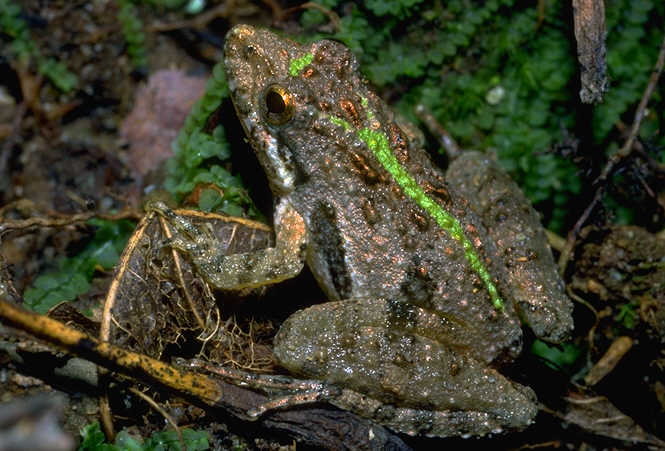Amidst the massive range of amphibians, the genus Acris stands out for its precise characteristics and ecological significance. Comprising two predominant species, the Northern Cricket Frog (Acris crepitant) and the Southern Cricket Frog (Acris grilles), those small yet charming creatures inhabit diverse wetland environments across North America. This article delves into the interesting world of Acris, exploring their biology, habitat, behavior, ecological position, conservation repute, and their courting with humans.
1. The Biology of Acris
Acris species are diminutive frogs, normally measuring between 1.5 to three.5 centimeters in period. Despite their small size, they own tremendous adaptations that permit them to thrive in their environments. The most unique feature of Acris is their warty skin, which provides camouflage against predators. Their shade ranges from inexperienced to brown, often with problematic patterns that mimic their environment.
Acris frogs exhibit sexual dimorphism, with men usually being barely smaller than women. During the breeding season, males expand vibrant orange or yellow color on their legs and groin areas to attract mates. The name of the male cricket frog is some other outstanding feature, producing a chain of fast clicks corresponding to the sound of crickets, that is important for his or her mating rituals.
2. Habitat and Distribution
Cricket frogs are in the main discovered in the eastern United States, inhabiting lots of wetland habitats such as ponds, marshes, streams, and rivers. They decide on areas with plentiful flowers, which affords shelter and breeding grounds. Northern Cricket Frogs are extra generally observed within the critical and northern components in their range, even as Southern Cricket Frogs are typical within the southeastern states.
These frogs are semi-aquatic, spending great time both in water and on land. They are excellent jumpers, a trait that enables them get away from predators and flow rapidly among special parts in their habitat. The adaptability of Acris to numerous wetland environments underscores their resilience and ecological versatility.
3. Behavior and Reproduction
Acris frogs are maximum energetic during the warmer months, normally from late spring to early fall. During this period, they have interaction in feeding, mating, and territorial behaviors. Their food regimen mainly consists of small insects and arthropods, which they catch the use of their sticky tongues. This eating regimen no longer best sustains them but also helps manage insect populations in their ecosystems.
The breeding season for Acris begins in past due spring, with males calling to attract females. The distinct call of the cricket frog can be heard from sizable distances, serving as a critical conversation tool. After mating, ladies lay eggs in shallow water, attaching them to flowers or submerged particles. The eggs hatch into tadpoles, which undergo metamorphosis into person frogs over the summer time months.
4. Ecological Role
Cricket frogs play an important position in their ecosystems, acting as each predator and prey. As insectivores, they help adjust insect populations, contributing to the balance of their food webs. Their presence indicates wholesome wetland environments, as they’re sensitive to changes in water high-quality and habitat conditions.
Furthermore, Acris frogs serve as prey for quite a few animals, along with birds, snakes, and large amphibians. This predation pressure is crucial for retaining ecological stability, making sure that no single species dominates the environment. The survival techniques of Acris, including their jumping ability and camouflage, mirror their edition to these ecological dynamics.
5. Conservation Status
Despite their resilience, Acris frogs face numerous threats that have caused declines in some populations. Habitat loss and degradation, specifically due to wetland drainage and development, are principal issues. Pollution, weather change, and the unfold of diseases like chytridiomycosis also pose tremendous dangers.
Conservation efforts for Acris frogs’ cognizance on protective and restoring wetland habitats, tracking populations, and mitigating threats. Environmental regulations and conservation applications intention to maintain the delicate stability of these ecosystems, making sure that cricket frogs and other wetland species can thrive. Public cognizance and schooling approximately the significance of amphibians is also essential for their conservation.
6. Relationship with Humans
Cricket frogs, though small and frequently disregarded, have a sizeable courting with people. Their presence in wetlands may be a hallmark of environmental health, presenting valuable insights for ecological studies and conservation. As bioindicators, they assist scientists monitor the impacts of environmental adjustments and pollution.
Moreover, Acris frogs make contributions to the cultural and natural background of the regions they inhabit. Their extraordinary calls are an acquainted sound in many rural and herbal regions, enriching the auditory landscape. Efforts to preserve cricket frogs and their habitats not simplest benefit those amphibians but also sell broader biodiversity and environment fitness.
In end, the genus Acris exemplifies the complex connections within ecosystems and the significance of small creatures in retaining ecological stability. By expertise their biology, behavior, and ecological roles, we can better respect the importance of these tiny frogs. Conservation efforts are crucial to defend them and the wetland habitats they rely upon, ensuring that Acris and their specific contributions to biodiversity endure for future generations.
